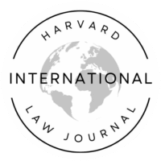Responding to Jeswald W. Salacuse, The Emerging Global Regime for Investment, 51 Harv. Int’l L.J. 427 (2010).
I. Introduction
Professor Salacuse argues that today’s network of investment treaties adds up to an emerging global “regime” for international investment.[1] He defines “regime” as do international relations scholars: “principles, norms, rules, and decision-making procedures around which actors’ expectations converge in a given area of international relations”[2] and adds that to qualify as a regime the network must “constrain and regularize the behavior of participants, affect which issues among protagonists move on and off agendas, determine which activities are legitimized or condemned, and influence whether , when, and how conflicts are resolved.”[3]
Salacuse’s conception of the regime does not include other arrangements that set out additional or overlapping principles, norms, and rules for international investment. Specifically, he does not incorporate the investment rules associated with the World Trade Organization (WTO). Yet, both the Agreement on Trade-Related Investment Measures (TRIMS), which restricts host countries’ imposition of performance requirements on foreign investors, and national schedules under the General Agreement on Trade in Services (GATS), which ensure market access to certain investors, cover part of the agenda of home countries in earlier negotiations for a truly multilateral agreement on foreign investment. These rules now surely form part of any emerging global investment regime. Of course, the “regime” has not generated international law that is binding on non-treaty countries. As a result, it does not cover a large part of investment flows, particularly those between rich countries. In addition, it has not yet created a really common set of principles, because language differs considerably from treaty to treaty and only limited common interpretation has emerged from arbitration tribunals. Subject to these caveats, Salacuse’s conclusion is reasonable: an international regime for investment is emerging through the spread of bilateral investment treaties (BITs), investment provisions in bilateral and regional trade agreements (RTAs), and dispute settlement clauses of individual investment agreements.[4] Salacuse’s exploration of the emerging investment regime and its key differences from most international regimes clarifies some of the special challenges the regime faces in retaining developing countries as adherents. Its unusual origins and structure carry important consequences for those who wish to encourage developing countries to remain in the regime. One feature is the fact that the existing regime makes it difficult for host countries to benefit from learning by experience. A second problematic outcome is that the scope of “investment” covered by the regime has frequently been stretched beyond what many host countries probably intended when they signed investment treaties. The third issue is the absence of significant “escape clauses,” safeguards that have played crucial roles in making other international regimes politically acceptable and long-lived. Finally, the unusual structure makes it extremely difficult for concerned parties to effect constructive change.
. . .
[1] See Jeswald W. Salacuse, The Emerging Global Regime for Investment, 51 Harv. Int’l L.J. 427, 431 (2010).
[2] Id. at 431 (quoting Stephen D. Krasner, Structural Causes and Regime Consequences: Regimes as Intervening Variables, in Power, the State, and Sovereignty: Essays on International Relations 113, 113 (2009)).
[3] Id. (quoting Donald J. Puchala & Raymond F. Hopkins, International Regimes: Lessons from Inductive Analysis, 36 Int’l Org. 245, 246 (1982)).
[4] Political scientists who have explored the “regime nature” of current rules on foreign investment have also tended to ignore the investment rules embodied in the WTO and the GATS, although they have generally accepted the view of the system as making up a regime. Schill argues a somewhat different point, that the current regime is approaching the equivalent of a multilateral regime because of its most-favored-nation provisions and the possibilities of treaty shopping. See Stephan W. Schill, Investment Treaties: Instruments of Bilateralism or Elements of an Evolving Multilateral System? 9–15 (Global Admin. L. Viterbo IV Working Paper, 2008), available at http://www.iilj.org/GAL/documents/Schill.pdf. One might also add to Salacuse’s list unambiguous consent to the International Centre for Settlement of Investment Disputes (ICSID) (or other) arbitration provided by some countries in their legislation. When such exists, a country opts into the regime without the need of BITs, RTAs, or clauses in investment agreements. In spite of the emerging international regime, unilateral actions persist. The United States still threatens to cut off aid, withdraw its generalized system of preferences (GSP), and vote against multilateral loans for countries that take U.S. property without prompt and adequate compensation. One might also consider national and multilateral political risk insurance organizations as part of any regime. The Overseas Private Investment Corporation (OPIC), for example, has insured investors against non-payment of arbitration awards.

